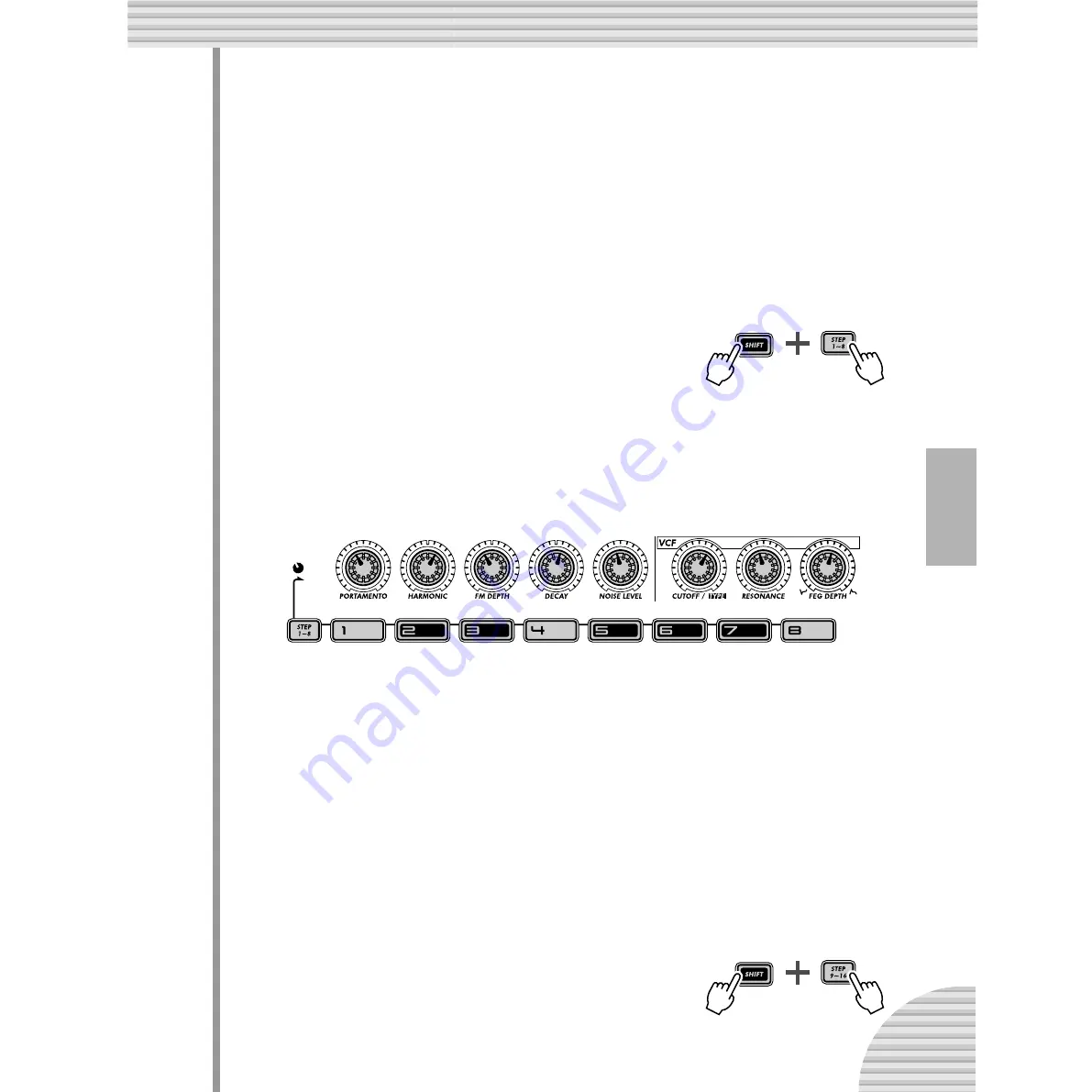
73
Chapter 14 Pattern Recording
■
Entering the Notes • • • • • • • • • • • • • • • • • • • • • • • • • • • • • • • • • • • • • • • • • •
In this section, you’ll be entering the notes (pitches) for each of the sixteen steps. We’re going to show you
a quick way to do this. The results here may not be very musical — but they’ll get you started fast and point
you in the right direction.
4 Turn all the Steps on.
In this condition, all the buttons are probably off. (Remember? You cleared the Pattern...) Go down the
line, and press each button so that they are all lit.
Why do this? Generally, when you’re recording the Synth track, it’ll be easier to create a Pattern if all
Steps 1 - 16 are on. This will create a busy Pattern, but you can always take out notes later.
5 While holding down [SHIFT], press [STEP 1-8].
Do this repeatedly, if necessary, to select Pitch entry.
This operation actually accomplishes two things:
1) It selects Steps 1 - 8 for recording.
2) It selects the event type (in this case, Pitch).
Also, notice the flashing [1] button. This indicates that Step 1 is ready for recording.
6 Now, with the PITCH indicator selected, use the knobs above the buttons
to set the Pitch for each Step, 1 - 8.
Each knob corresponds to the Step directly below it. For example, the PORTAMENTO knob controls
entry for Step 1, the HARMONIC knob for Step 2, and so on.
Set the knobs (roughly) to the positions indicated above. No, you don’t have to be exact. In fact, you can
set these any way you want. We just figured that twiddling them around 11:00 to 1:00 is easy to do. You
won’t wind up with an earthshakingly memorable melody, but it should at least give you a listenable set
of pitches to work with.
Notice that when you tweak a knob, the corresponding Step button flashes.
7 Now, let’s work with Steps 9 - 16.
Press button [9].
We just showed you the fast way to select Steps 9 - 16 for editing:
1) Edit Steps 1 - 8 first, then
2) Press button [9] to edit the same parameter for Steps 9 -16.
An alternate way is to hold [SHIFT] and press [STEP 9-16], repeatedly if
necessary (like you did in instruction Step 5 above).






























